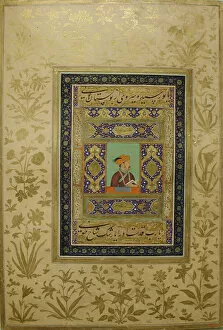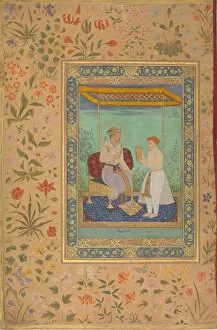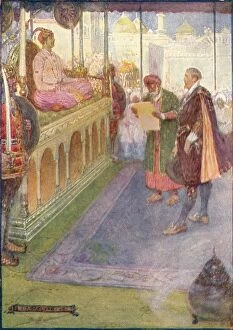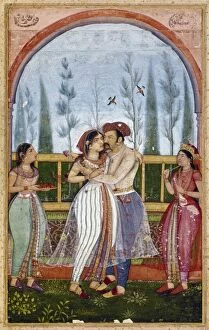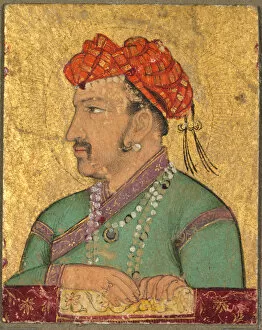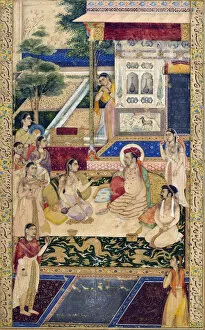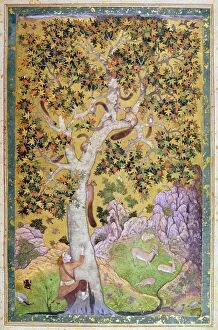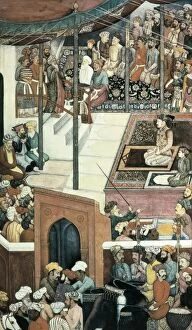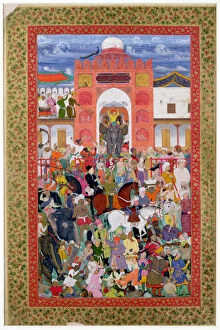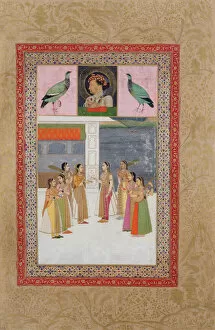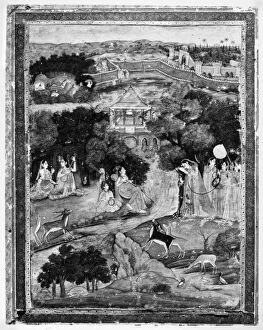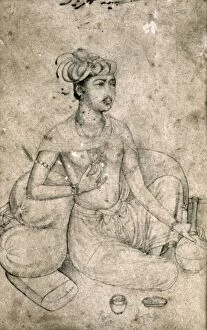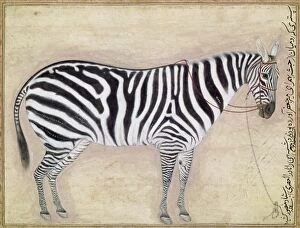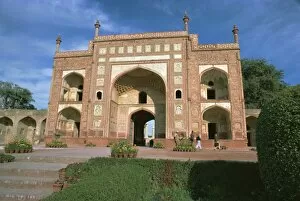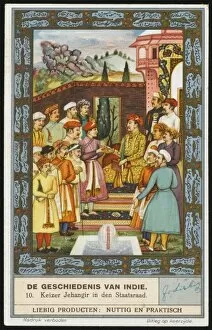Jahangir Collection (#2)
Jahangir, the son of Akbar, was a prominent figure in Mughal history
For sale as Licensed Images
Choose your image, Select your licence and Download the media
Jahangir, the son of Akbar, was a prominent figure in Mughal history. His reign saw significant cultural and artistic developments, as evident in the Folio from the Shah Jahan Album. This exquisite artwork showcases Jahangir's appreciation for beauty and nature through its depiction of "The Flower Gatherers. " However, Jahangir's influence extended beyond art. He appointed Zhangir Khan as governor of Kazakh Khanate, demonstrating his astute political decisions. The interior of Mughal emperor Akbar's Tomb stands as a testament to Jahangir's respect for his father's legacy. Foreign relations were also crucial during Jahangir's rule. In 1608, Hawkins presented King James' letter to the Great Mogul—an event captured in an intriguing painting from that era. Jahangir shared a close bond with his wife Nur Jahan and their son Prince Khurram. A captivating portrait depicts them together, showcasing their power and unity. Religion played a significant role in Jahangir's life too. In "Jahangir Preferring a Sufi sheikh to Kings, " he is depicted choosing spirituality over worldly power—a reflection of his personal beliefs. Allegorical portraits further highlight Jahangir's grandeur and opulence; they are intricate masterpieces created with gold on paper. Yet amidst all this splendor, there were moments of conflict. "Jahangir Shooting the Head of Malik Ambar" portrays one such instance when he dealt with opposition using forceful measures. His court was not only visited by diplomats but also renowned figures like Sir Thomas Roe who came on an embassy mission—depicted vividly in oil and pencil on canvas.

